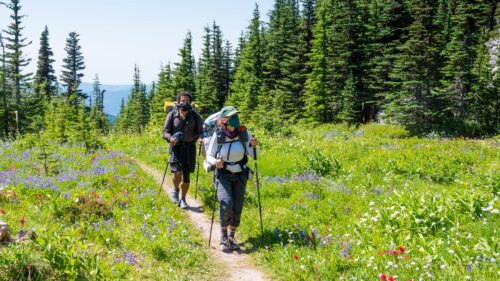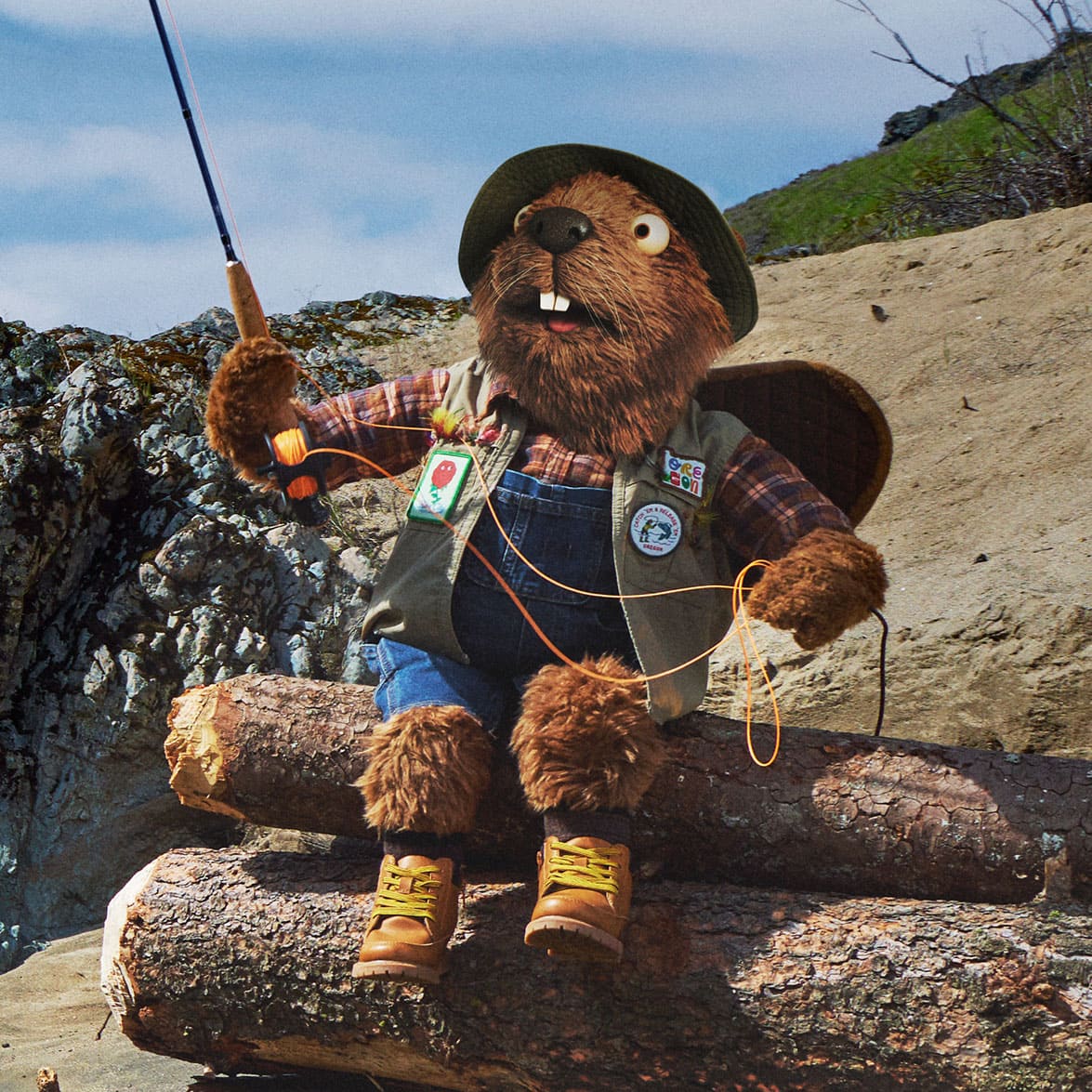Editor’s note: Call destinations before you visit to make sure they’re open. Follow all COVID-19 guidelines, get vaccinated before you travel and remember to bring your face covering.
Top Things to Know:
- Stay local with day trips near home
- Check the park’s status before you go
- Pack everything you need
- Practice good personal hygiene and physical distancing
- Prevent crowding in parking lots, trailheads and boat ramps
- Be mindful and avoid risky behavior
As Oregon’s outdoor areas and businesses welcome visitors back under Gov. Kate Brown’s Risk and Safety Framework, it’s important to know how to enjoy these outdoor spaces safely.
To prevent the spread of COVID-19, face coverings are required at some indoor facilities — so it’s a good idea to always carry one with you. However, that’s not the only consideration before visiting a recreation site right now. Be prepared for new protocols to ensure a happy — and safe — visit. Here are six important steps for getting outside in Oregon in 2021.
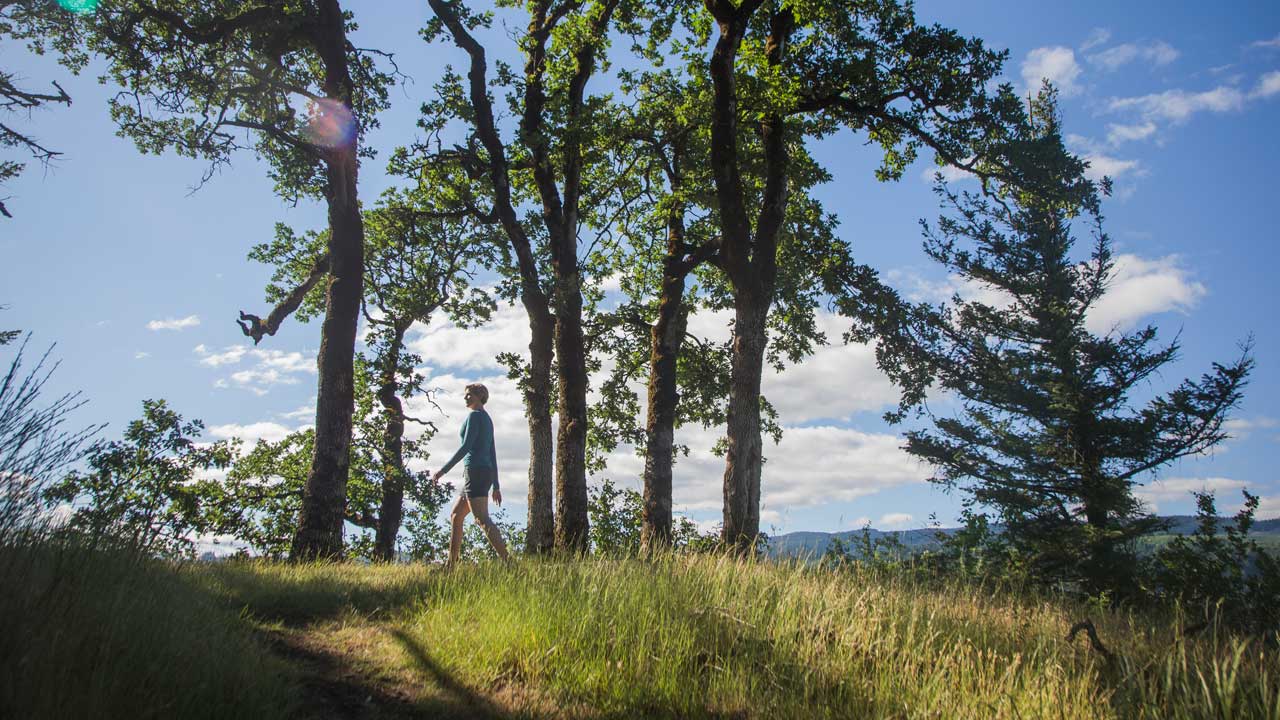
1. Stay local with day trips near home
As you prepare for a day trip to Oregon’s outdoors, be sure to pick a destination that’s close to home. Visiting a distant park can put a community’s limited resources at risk and make you less prepared for unexpected closures. Land managers recommend avoiding the more popular sites and peak hours. An Oregon web resource, Parkpulse.io surfaces recreation points near your location with details about each site’s crowding potential and COVID-19 prevalence.
Stick to small groups made up of only members of your household. Limiting travel and contact with non-household members helps contain the spread of COVID-19. Stay home if you feel sick or have any flu-like symptoms.
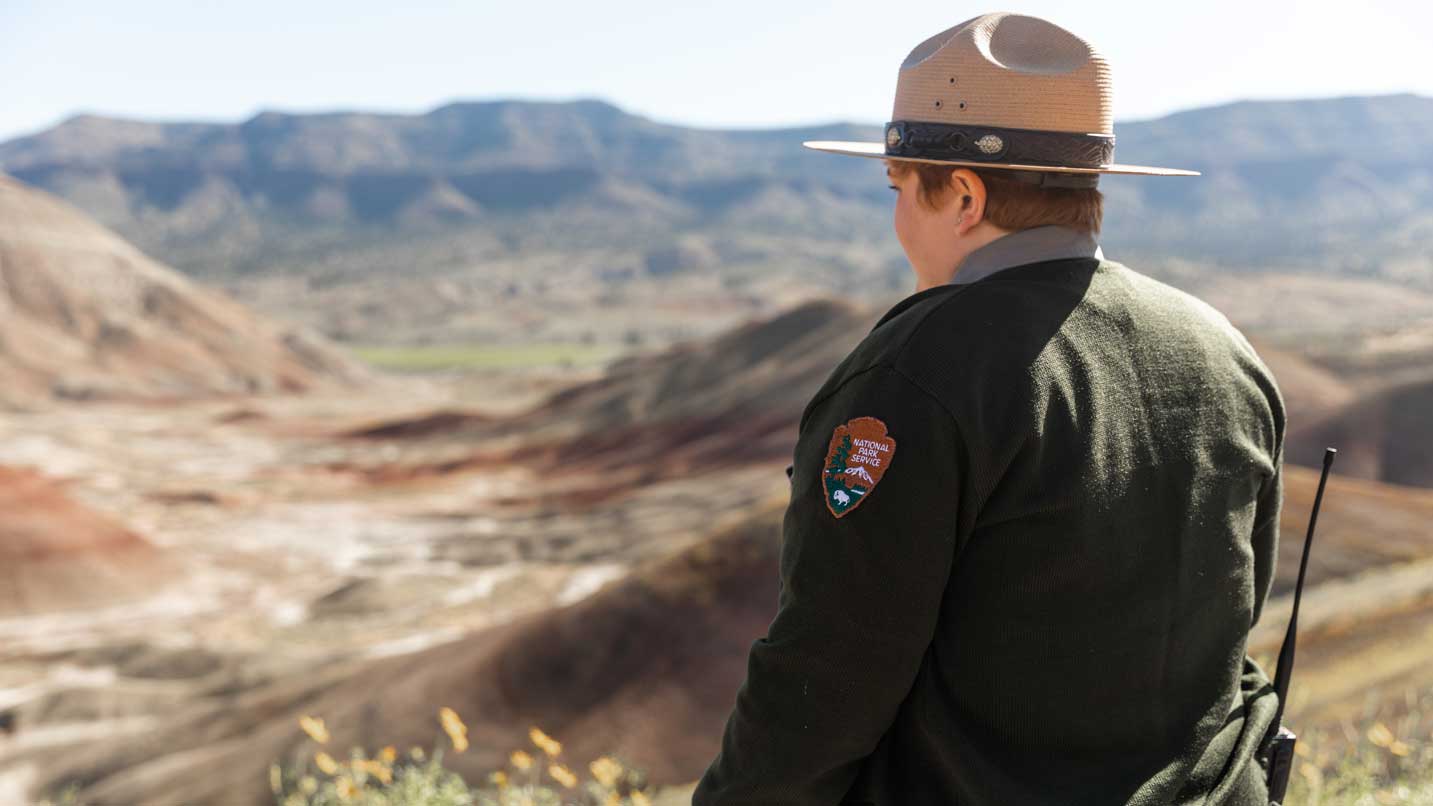
2. Check the park’s status before you go
Many of Oregon’s parks are open for recreation, though they may be operating with limited staff or reduced services or facilities. Before you go, learn who manages the site and if they’re currently open.
Understand that closures can happen without notice. Parks may close unexpectedly due to public safety concerns, such as if physical distancing cannot be maintained or there is a risk of an infected person at the site. Have a backup plan in case your destination closes unexpectedly.
Wondering what is open or closed? Here are some restrictions to keep in mind.
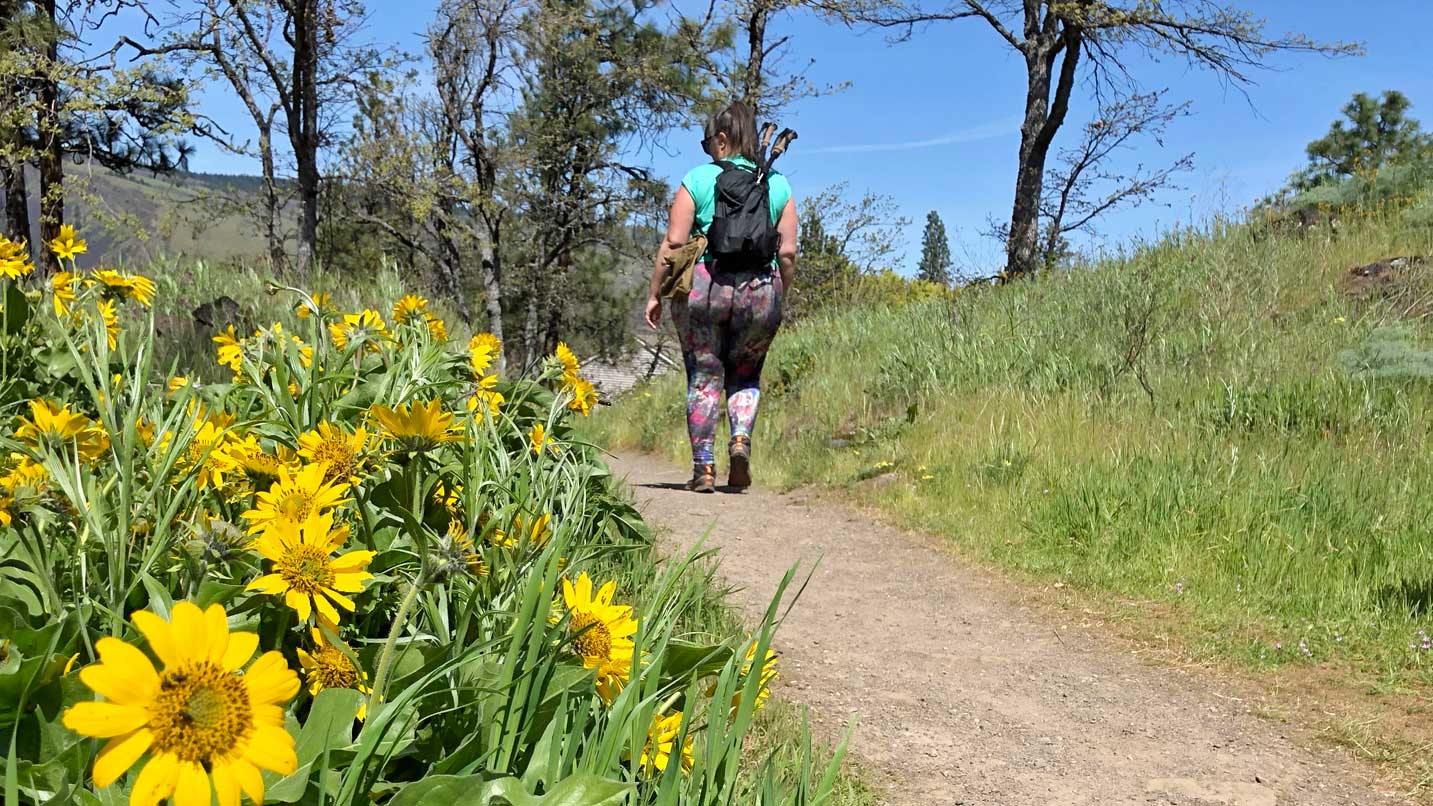
3. Pack everything you need
Bring all the supplies needed for the day, including the Ten Essentials, hand sanitizer, face coverings, money for park fees and gas. Consider purchasing your parking pass in advance. Most parks prefer card payment, but many sites managed by the Forest Service and BLM only accept cash.
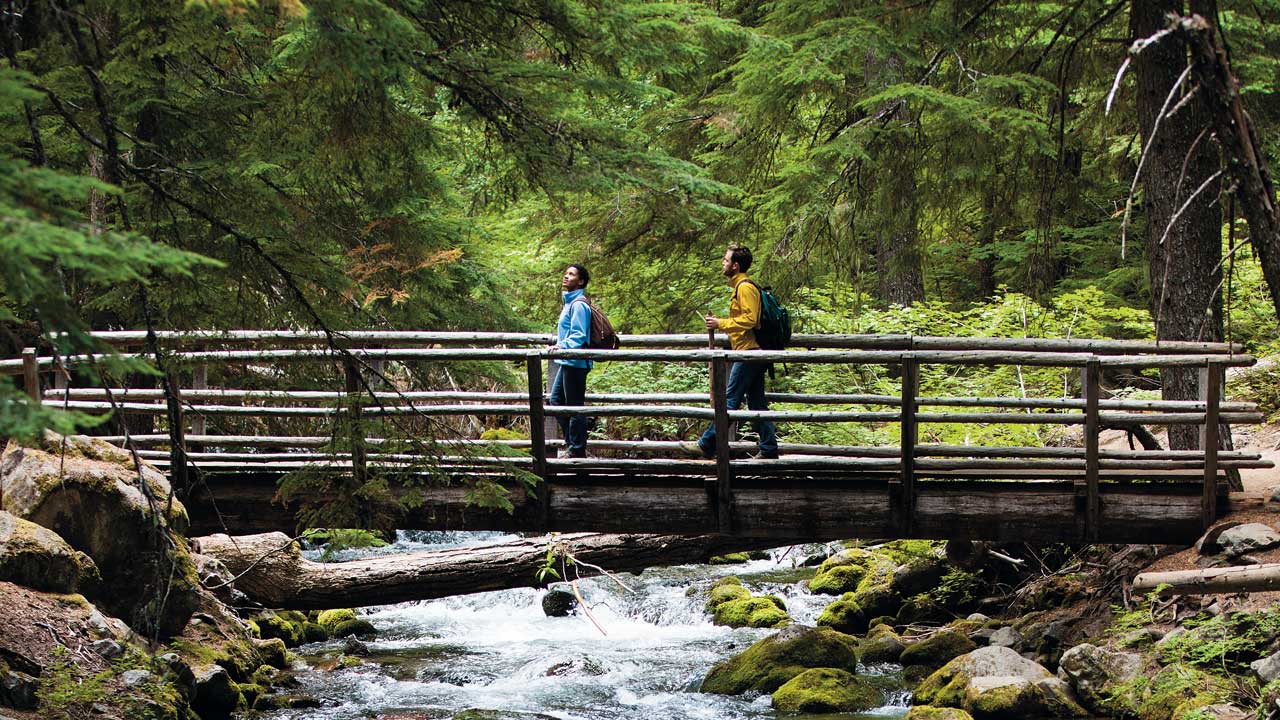
4. Practice good personal hygiene and physical distancing
Just because you’re outdoors doesn’t mean you won’t run into other people. Keep practicing good personal hygiene and wash or sanitize your hands often. Know which facilities are open (restrooms may be closed). Cover your cough with a tissue (and then throw it away), or the inside of your elbow.
Face coverings are not required outdoors, but it’s strongly recommended for nonvaccinated people and those with health risks to continue to wear face coverings in crowded outdoor areas. Be prepared to wear your face covering at trailheads and parking lots where it may be crowded.
Continue to practice physical distancing. When you’re out on the trail, make sure you are keeping a distance of six feet or more between yourself and others outside of your household. According to standard trail etiquette, hikers coming uphill have the right of way. If your site is too crowded and you are not able to maintain six feet of distance, leave and come back another time.
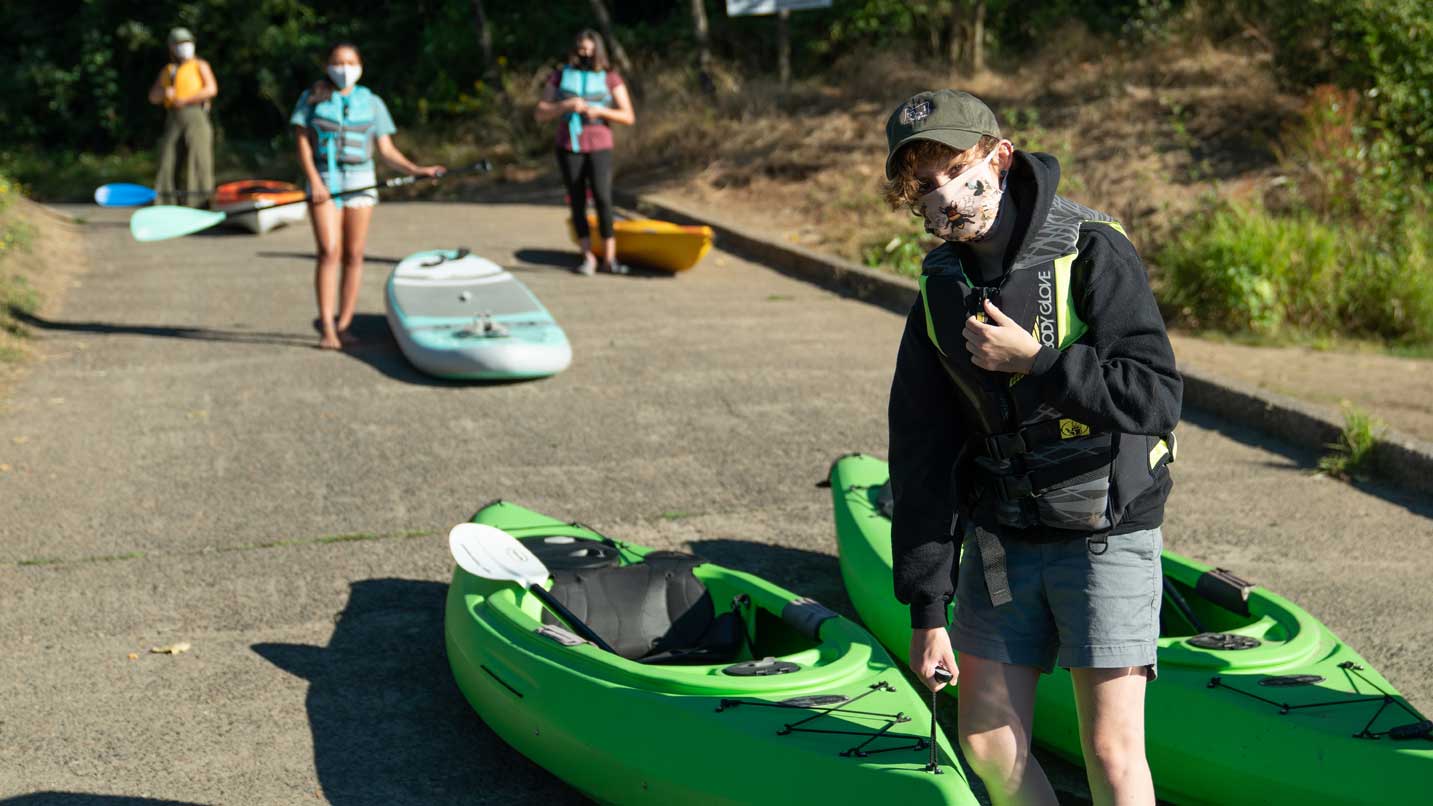
5. Prevent crowding in parking lots, trail and boat ramps
Don’t linger at parking lots, trailheads or boat ramps to avoid crowding . These areas can get crowded quickly, hindering emergency and residential access. Park your car in designated areas only.
Always keep pets leashed with a 6-feet distance from other people and animals.
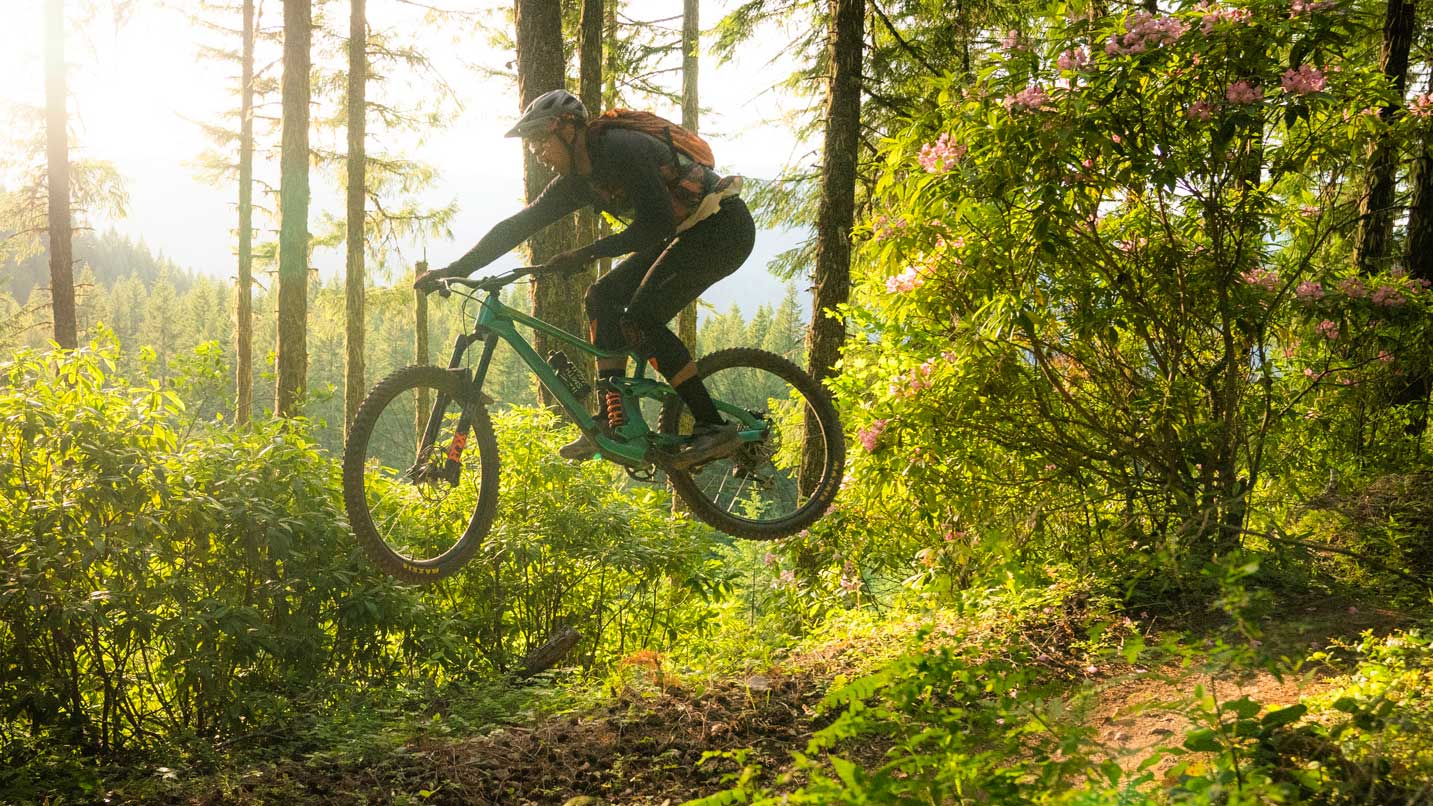
6. Be mindful and avoid risky behavior
Pay attention to your surroundings. Stay on designated trails except when you briefly need to give others more room when passing to maintain physical distancing. Take any trash with you, including disposable gloves and face coverings, and make wildfire prevention a priority. Follow the ways to Take Care Out There. Ensuring the parks stay clean lessens the impact on staff and the risk of spreading the virus.
It’s not the time to try new things — choose activities within your skill level. Risky behavior puts strain on limited health and rescue resources, which are focused on virus-related emergency needs right now.
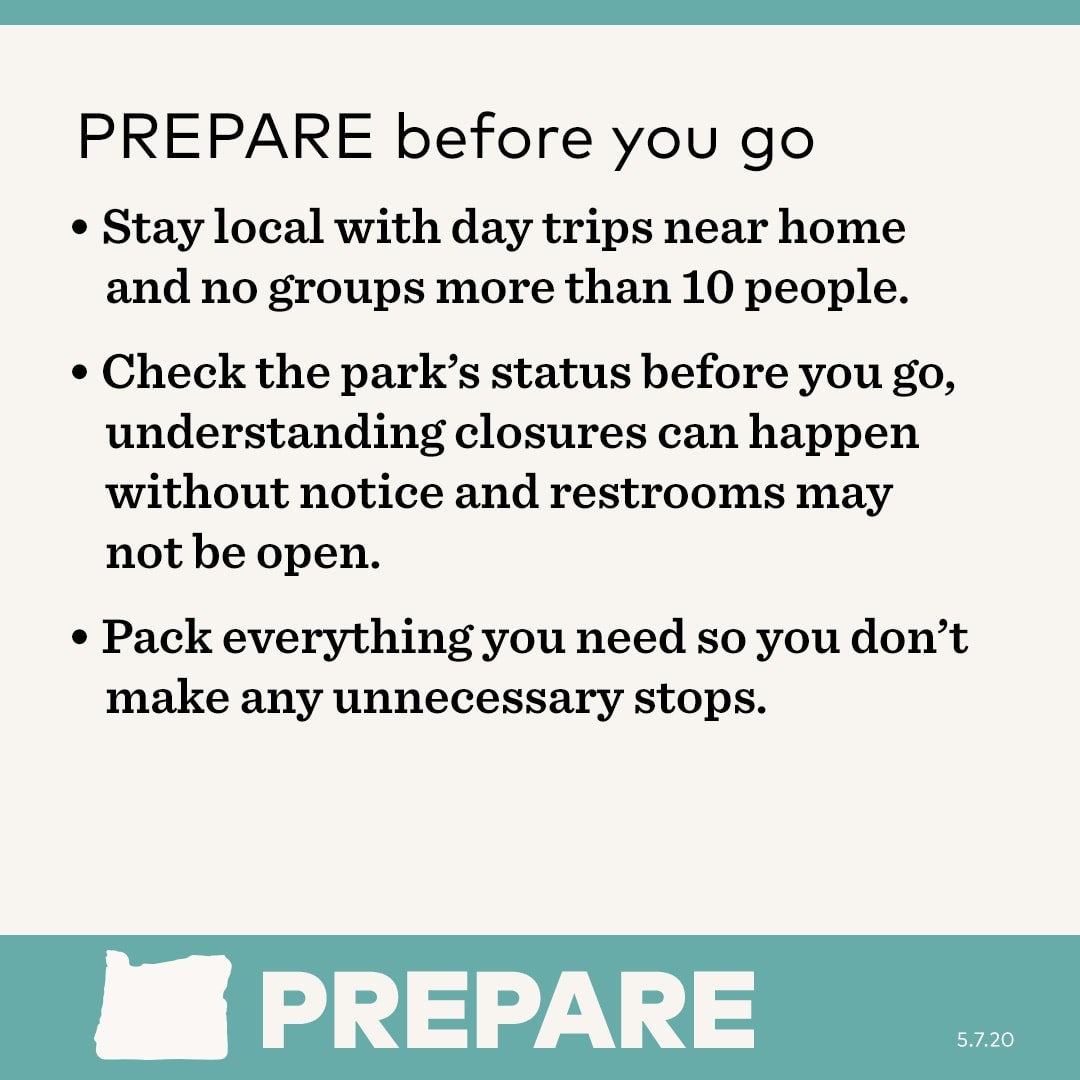
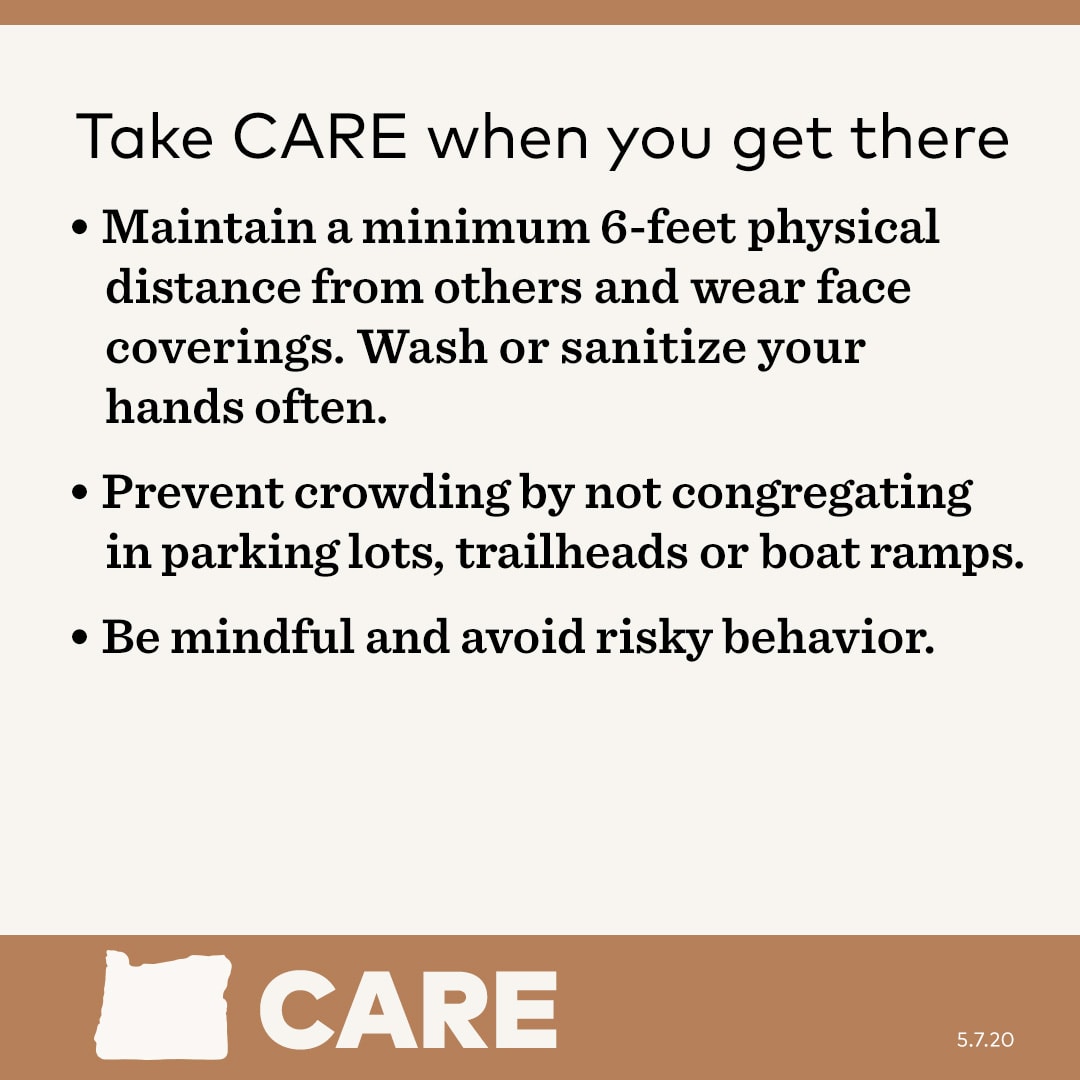
More tips for exploring Oregon’s outdoors
Relish in the beauty: Experiencing the quiet, awe-inspiring beauty of nature can not only lift your spirits, it can also improve your health. Think of Oregon’s vast outdoors as your place to relax and recharge. You can help us keep this place beautiful for generations to come by recreating responsibly and avoiding taking unnecessary risks.
T.R.E.A.D. lightly: One handy reference tool is to follow the T.R.E.A.D. principles for treading lightly while social distancing outdoors: Travel responsibly (stay close to home), respect the rights of others, educate yourself, avoid sensitive areas and do your part (pack out what you pack in).
Support local businesses: Keep in mind that as you plot your post-hike reward, restaurants have adjusted hours and operations. You can still treat yourself to a yummy burger or plate of tacos — just call to see if the establishment is requiring reservations or offering takeout. For an al fresco meal, check out the restaurants that have expanded their outdoor dining space.
